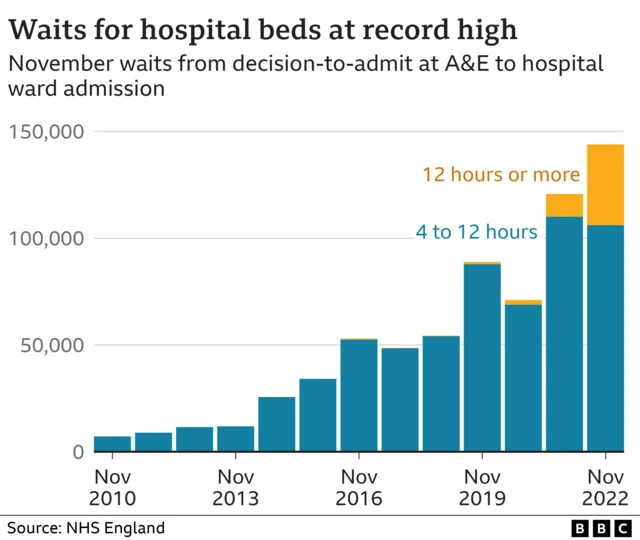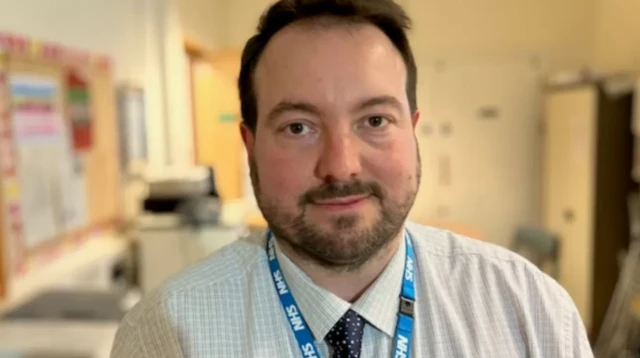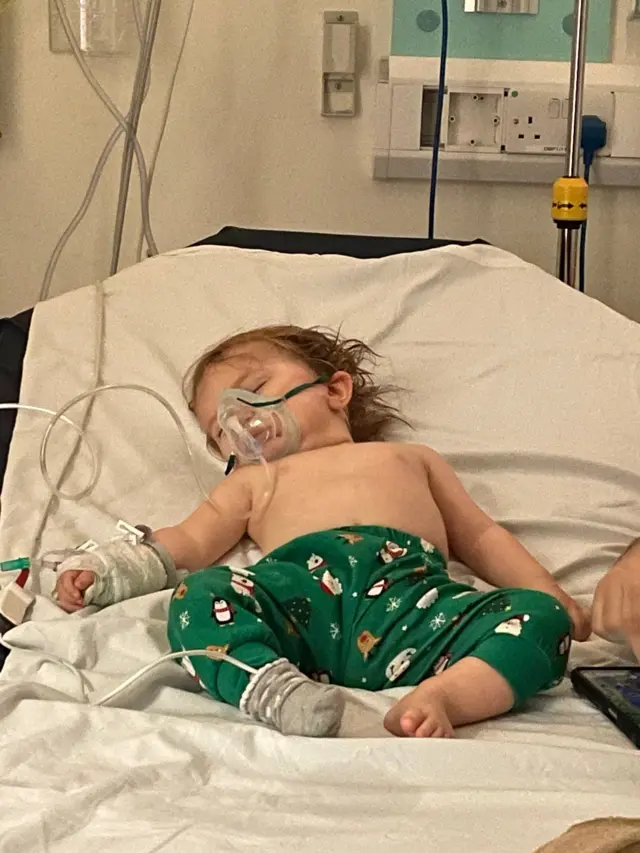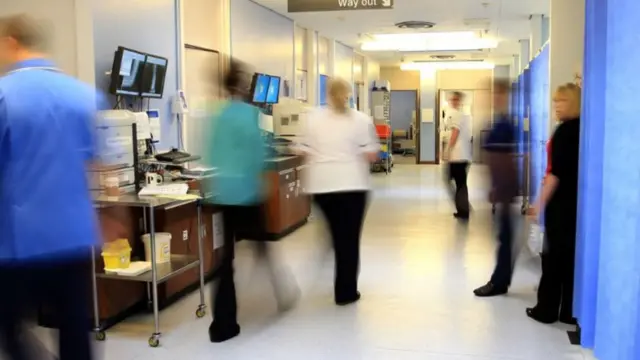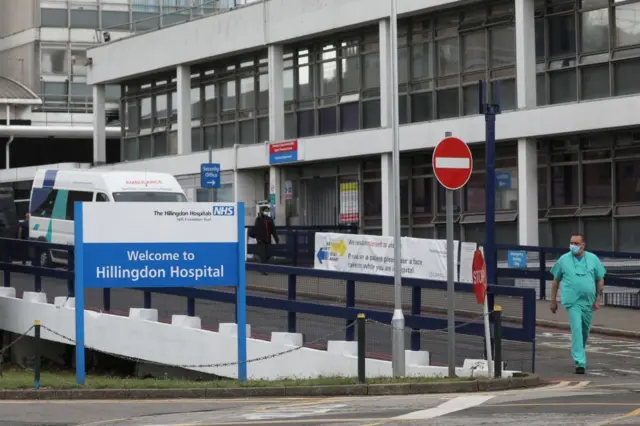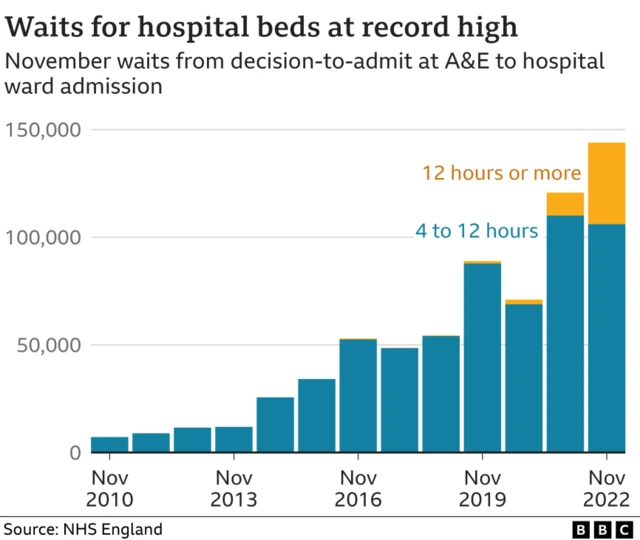‘Goodwill has concealed the cracks in the NHS’published at 13:17 GMT 8 December 2022
 Gem O'Reilly
Gem O'Reilly
Live reporter
You heard earlier from Laura - the ear, nose and throat (ENT) surgeon.
I also asked her about how A&E could be improved, and generally what she thought needed to change in the NHS.
She replied: “It feels like you’re scooping out a sinking ship with an egg cup when you ask what needs to change.
"This has been decades of slowly chipping away at an NHS that’s now bare bones. So when it has a stress, it’s feeling crippled."
Laura said the public could help “relieve the burden” by exercising “personal health responsibility” and by only seeking medical care if it was really needed.
I asked her about the recent announcement of nurses’ going on strike in a dispute over pay.
She explained that you don’t go into medicine to earn huge amounts of money, but everyone has to live.
In her words: “putting financial stress on top of an emotional and physically stressed out workforce is too much.”
Quote MessageThe core of the NHS is built on its staff. We go above and beyond, and it is goodwill that has concealed the cracks in the NHS. That goodwill has run dry now and things need to change.”
